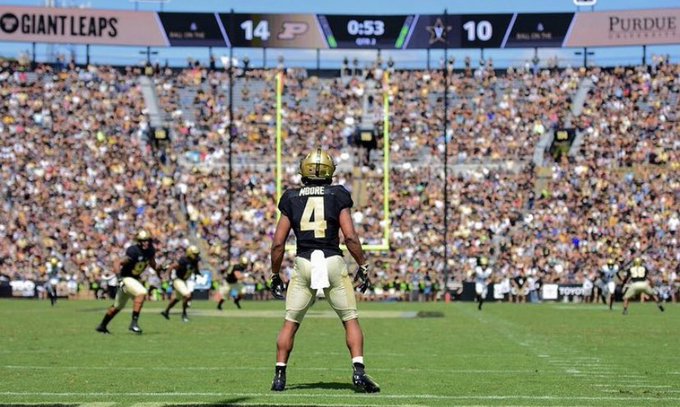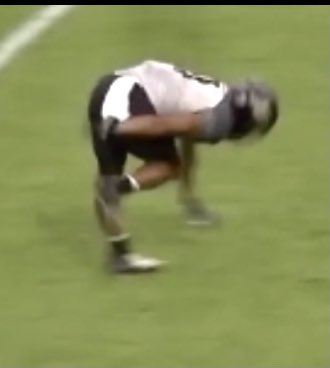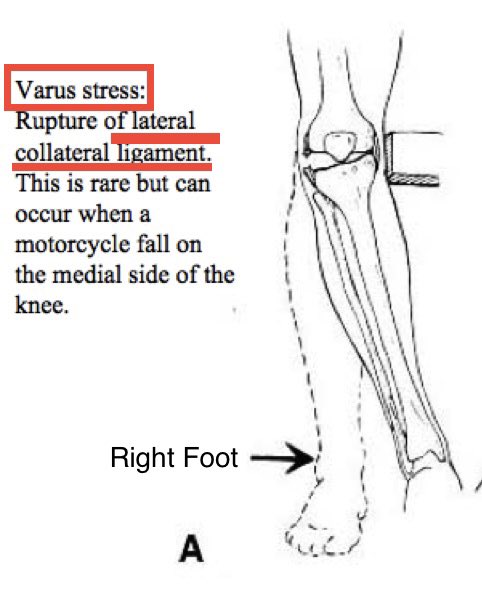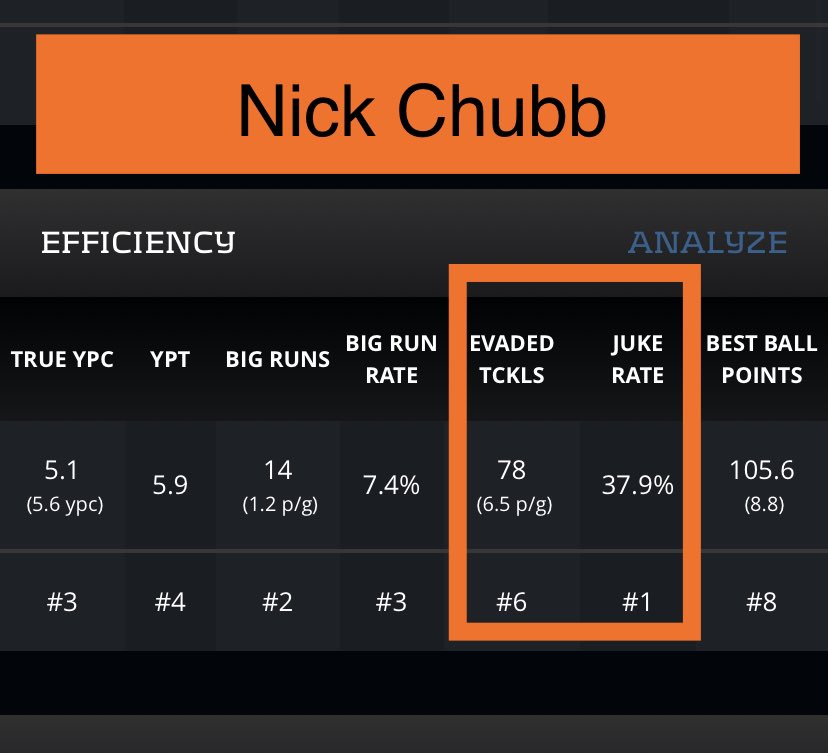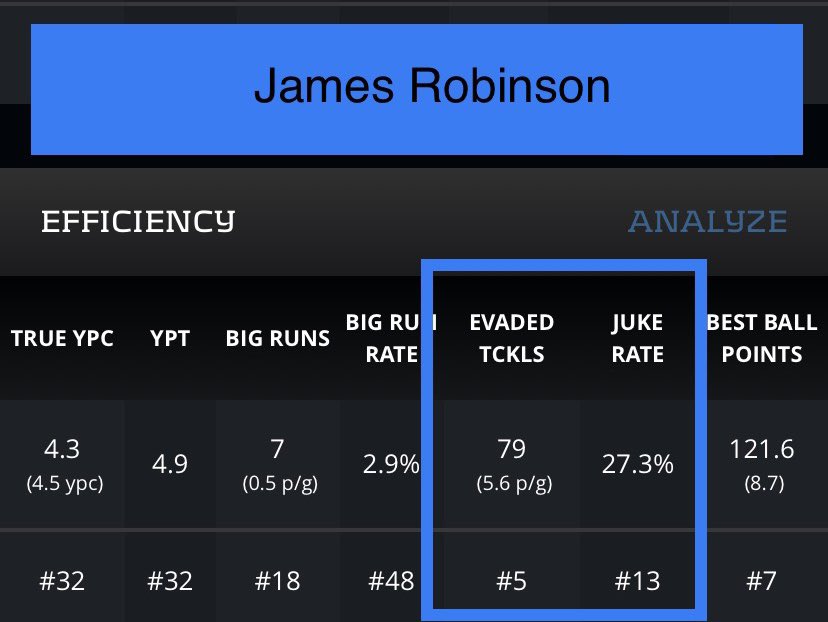I mean, you had to see this one coming. How was I, the single biggest Purdue fan in the fantasy football space, not going to write about Rondale Moore’s injury history. I am here to debunk the myth that “Rondale Moore is injury prone.” I won’t’ stand for the slander anymore. Moore is not injury prone, in fact, he is quite the opposite.
Injury History
- 2019 sustained a grade 1 left hamstring strain that caused him to miss the rest of the season
- 2020 grade 1 hamstring strain on L again. and missed the first 3 games of the season
2019 Injury
9/28/19 – Rondale Suffered this injury on this left leg against Minnesota. Watching live, I was initially concerned about an ACL/PCL tear since hyperextension is a possible mechanism of injury. Turns out it was a Grade I hamstring tear although Moore did miss the rest of the season.
Grade I hamstring strains usually take anywhere between 2-4 weeks to return. However, Moore missed the final 8 games of the Purdue season. Why? As an avid Purdue fan, I can attest the Boilers were not very good. By the time he could have returned, the team was 2-7.
By that point, it became clear that Purdue wasn’t going to a bowl game. Behind the scenes (on Purdue insider message boards) it was strongly suggested to fans that Moore would not return in 2019 to preserve his health and prepare for the 2020 season.
If you find yourself still questioning the legitimacy that Moore just suffered a hamstring strain, Moore himself later confirmed it. In a PFF interview, Rondale talks about this injury in detail. The 56 min mark is when the interview starts. Rondale address the injuries at 1:02:00.
Context Matters
When I look at Moore’s hyperextension injury, I think it’s more a testament to his physical traits that he did not sustain a ligamental injury that required surgery – a glass half-full approach to this injury. Where most would have suffered a more serious injury, he doesn’t.
Here’s a video of Parris Campbell’s PCL tear that ended his 2020 season. A similar mechanism of injury (knee hyperextension). Although he does have a defender apply a valgus force to the knee.
In 2020 George Kittle has a similar mechanism of injury but this time an MCL sprain (ligament) and bone bruise. Kittle only missed two games. Was he 100 percent upon return? Probably not but it highlights his physical/athletic abilities that he missed only a couple of games.
Where other athletes would have sustained more serious/ligamental injuries that required surgery, players like Moore and Kittle don’t. Could it be luck? Sure. But it could also be an example of how special some of these athletes are. They have the strength and superior tissue quality to avoid serious injury and recover quicker than most.
2020 Injury
Fast forward to 2020 and the issues that COVID-19 causes for CFB. It’s unclear if the Big Ten will even have a season. Moore opts out, then back in before re-injuring his left hamstring in camp. As a result, he got slapped with the injury-prone label.
He missed the first 3 games of 2020, only feeding the injury-prone narrative. Rumors are Moore’s absence was due to waiting for a medical insurance policy to clear, not his readiness to play. He even apologized to his team for being a “distraction” when he returned – feeding into that narrative.
Moore later mentions that this injury was related to poor workload management, as he was rushing to get back and ready for the 2020 season. He was not listening to his body.
Post-Injury
After missing 11 straight games. I was worried about how Rondale would perform like when he finally returned. He put those doubts to bed rather quick. Here’s Purdue’s very first offensive play his first game back
Rehabilitation
As a physical therapist, treating an athlete who sustained multiple hamstring injuries here are few things I’d want to work on – Proprioception, single-leg balancing with good knee alignment. Exercises to improve the strength ratio between knee hamstrings and quads.
What do you know… this is Rondale work-out video taken earlier this month. He’s working on those exact things. Not to mention he demonstrates the athleticism that drew us all to his profile. He’s just a freak.
Summary
Rondale sustained two separate grade I left hamstring strains.
There’s reason to believe that his extended time missed was due to reasons other than his injury. Context is important. It’s not fair to label Rondale as injury-prone. In fact, he might be the opposite.
If you wish to see the link to the original Twitter thread click HERE.
For a more in-depth fantasy football-driven breakdown of Rondale Moore or any other rookie prospects, make sure you check out The Undroppables 2021 Rookie Draft Guide.
